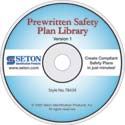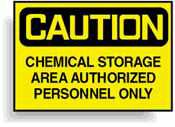 |
 |
| MSDS Topics |
Free Sites | FAQ's | Regulations | Glossary | Software | Suppliers |
| Books | Forum | Poll | Fun stuff | Quiz | Store | |
| MSDS and safety supplies | Search ALL our MSDS info | |||||
 | |||
 |
 |
 |
|
| Title: 05/08/1991 - MSDS required with initial shipment of chemicals used in humidification systems in office areas | |
| Record Type: Interpretation | Standard Number: 1910.1200 |
May 8, 1991
Mr. Walter A. Macht, P.E.
Assistant Vice President
Environmental and Regulatory Affairs
Betz Entec, Inc.
508 Prudential Road
Horsham, Pennsylvania 19044
Dear Mr. Macht:
Thank you for your letter of March 28, regarding the application of the Occupational Safety and Health Administration's (OSHA) Hazard Communication Standard (HCS), 29 CFR 1910.1200, to chemicals used in humidification systems in office areas. This letter is also in follow-up to the discussion held between you and Ms. Melody Sands of my staff on this same topic on April 26.
You attached to your letter a copy of an article from the March/April, 1990, issue of a trade journal entitled Engineered Systems which claimed that OSHA's HCS required employers to do such tasks as retain a legal firm, contract with environmental consulting engineers to "make" an environmental impact study of humidification systems which are "chemically dependent," submit a plan for OSHA approval, and several other items. These efforts are not required under the HCS. I am enclosing for your information a recently-revised booklet on the HCS entitled "Chemical Hazard Communication," along with a copy of the standard itself and OSHA's compliance directive for the HCS, CPL 2-2.38C, which will help clarify the misconceptions set forth in the trade journal article and provide information on employer responsibilities under the HCS.
| Your specific question concerned whether the HCS applies to office workers who may be exposed to trace amounts of chemicals emitted from steam humidification systems which are part of the overall heating, cooling and ventilation system of the building. As discussed with you on the telephone, the requirements of the HCS would apply to employers of personnel such as maintenance workers, building engineers, or any other employees who would be exposed or potentially exposed by handling or storing the anti- corrosive chemicals or actually adding them to the humidification system. The chemical manufacturer or distributor of the chemicals is responsible for transmitting with the initial shipment a material safety data sheet (MSDS) which provides information on the chemical and safe handling procedures, among other things. The receiving or downstream employer must make the sheets available to all employees working with these chemicals as part of his overall hazard communication program. Such employees who are or may be exposed in their workplace need the protections afforded by the information that must be provided to them in their workplace hazard communication program. |  This CD has 25 pre-written safety plans that you can customize in minutes. Get yours from Safety Emporium. |
We hope this discussion and enclosed information will be helpful to you in clarifying the issues you raised. Please feel free to contact us again if we can be of further assistance.
Sincerely,
Patricia K. Clark, Director
Directorate of Compliance Programs
Enclosures
March 28, 1991
Ms. Patricia Clark
OSHA Health and Safety Standards
Division of Compliance Programs
Room N-3469
200 Constitution Avenue N.W.
Washington, DC 20210
Dear Ms. Clark:
We would appreciate your opinion on a matter regarding the OSHA Hazard Communication Standard.
|
Several articles have appeared in a trade journal which discuss chemical use in humidification systems and requirements under the OSHA Hazard Communication Standard. A copy of one of them is attached for your review. Please note that it discusses retaining a legal firm, contracting with an environmental consulting engineer, environmental impact statements, submitting a plan to OSHA for approval, etc. With respect to chemical exposure from these humidification systems, attached is a publication which documents that room concentrations of amines were in the low parts per billion range when steam from chemically treated boilers was used for humidification. These air concentration levels are consistent with other studies and calculations using typical chemical treatment levels. Assuming that a room being humidified is a work area (e.g., office space), and given the typical levels of amines in the room air (ppb range), what are the requirements under the OSHA Hazard Communication for an employer? Also, are each of the nine items listed as suggested scope of work in the Engineered Systems article, consistent with the OSHA Hazard Communication Standard? |  Ensure that your MSDS collection is "readily accessible" with these handy compliance centers from Safety Emporium.
|
Very truly yours,
BETZ ENTEC, INC.
Walter A. Macht, P.E.
Assistant Vice President
Environmental and Regulatory Affairs
Attachment
500 PRUDENTIAL ROAD
HORSHAM, PENNSYLVANIA 19044
215 674-9200
FAX 215 675-4023
Excerpt from Engineered Systems, March/April 1990, page 17-18
FOR HUMIDIFICATION CHEMICAL USE, CHECK THE LAW
In an issue of its newsletter Facilities Forum, the American Institute of Plant Engineers Foundation provided some advice for owners of steam humidification systems.
The report was based on an advisory prepared by CFSI Environmental Services to inform people about OSHA regulations and their relationship to steam humidification equipment. In the report, the following procedures were recommended:
Retain a legal firm to advise on OSHAs HCS (Hazard Communication Standard) environmental requirements regarding hvac humidifiers used by the company to which any suspect or hazardous chemicals identified by MSDS (Material Safety Data Sheet) have been added.
Assign this suggested scope of work:
The work should, at a minimum, provide the following information:
|  Encourage proper work habits with safety signs, labels and training from Safety Emporium. |
For more information contact CFSI Environmental Services, Dorchester Dr., Rye Brook, NY 10573; 914-939-4039.
The official, public domain, OSHA version of this document is available at http://www.osha.gov/pls/oshaweb/owadisp.show_document?p_table=INTERPRETATIONS&p_id=20267&p_text_version=FALSE